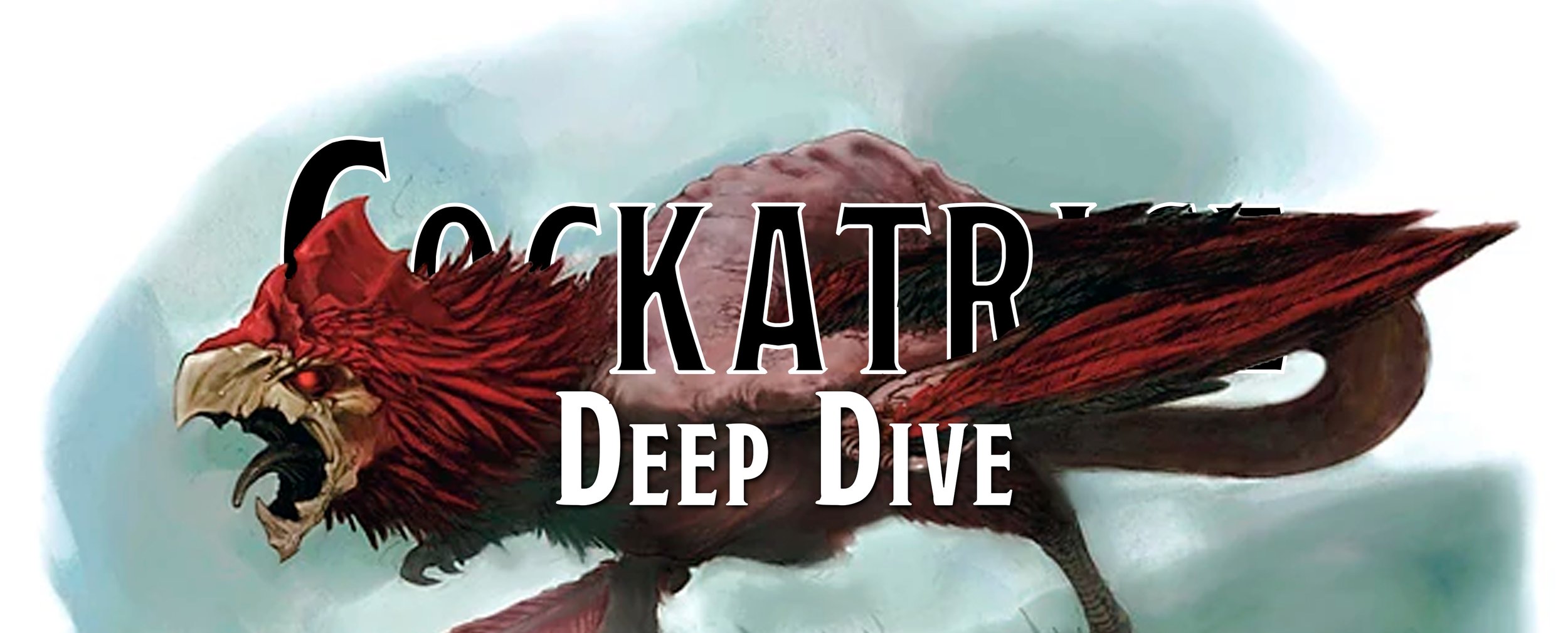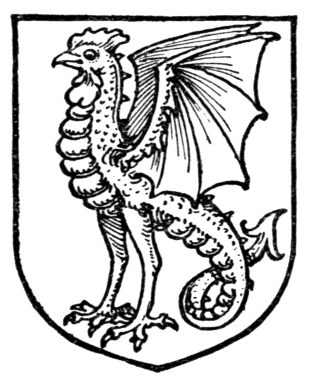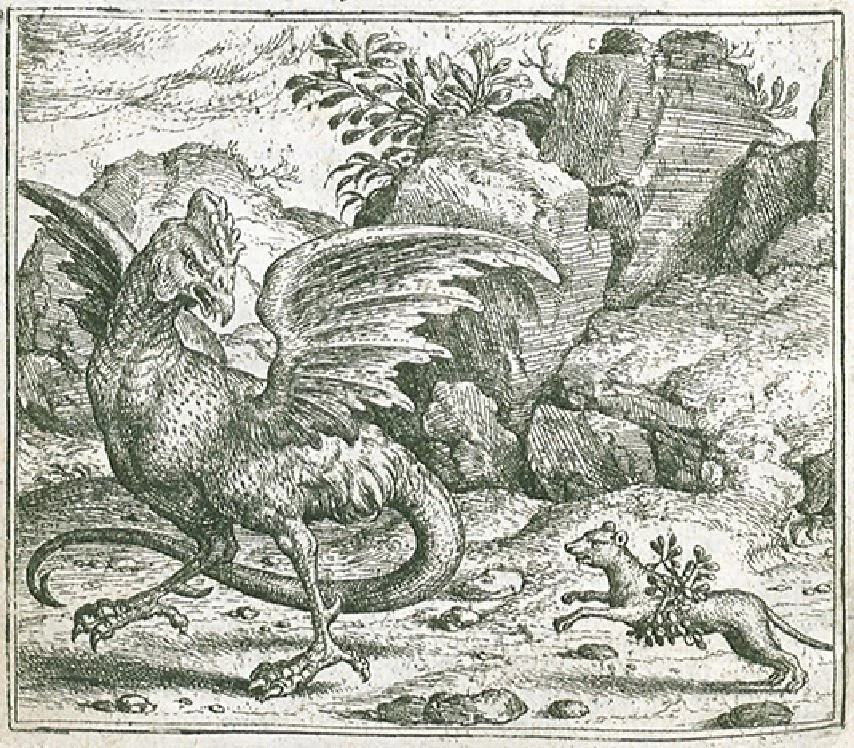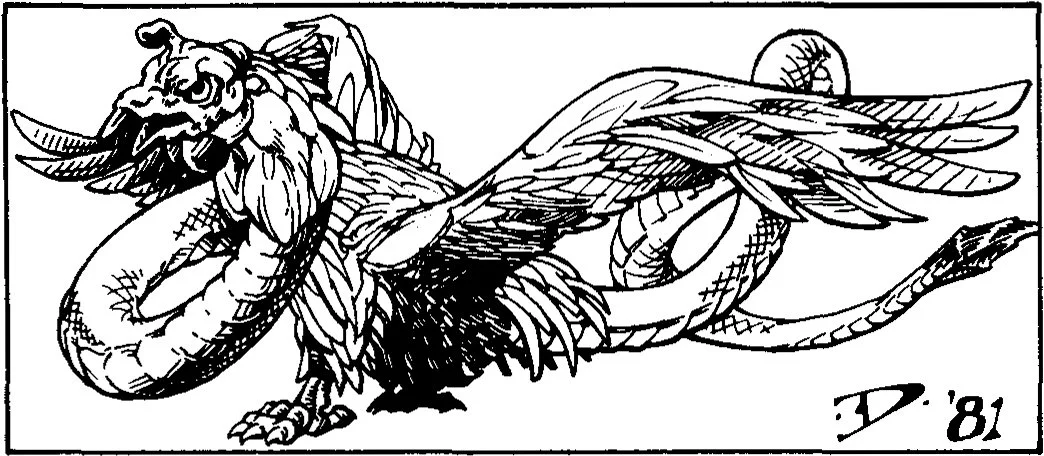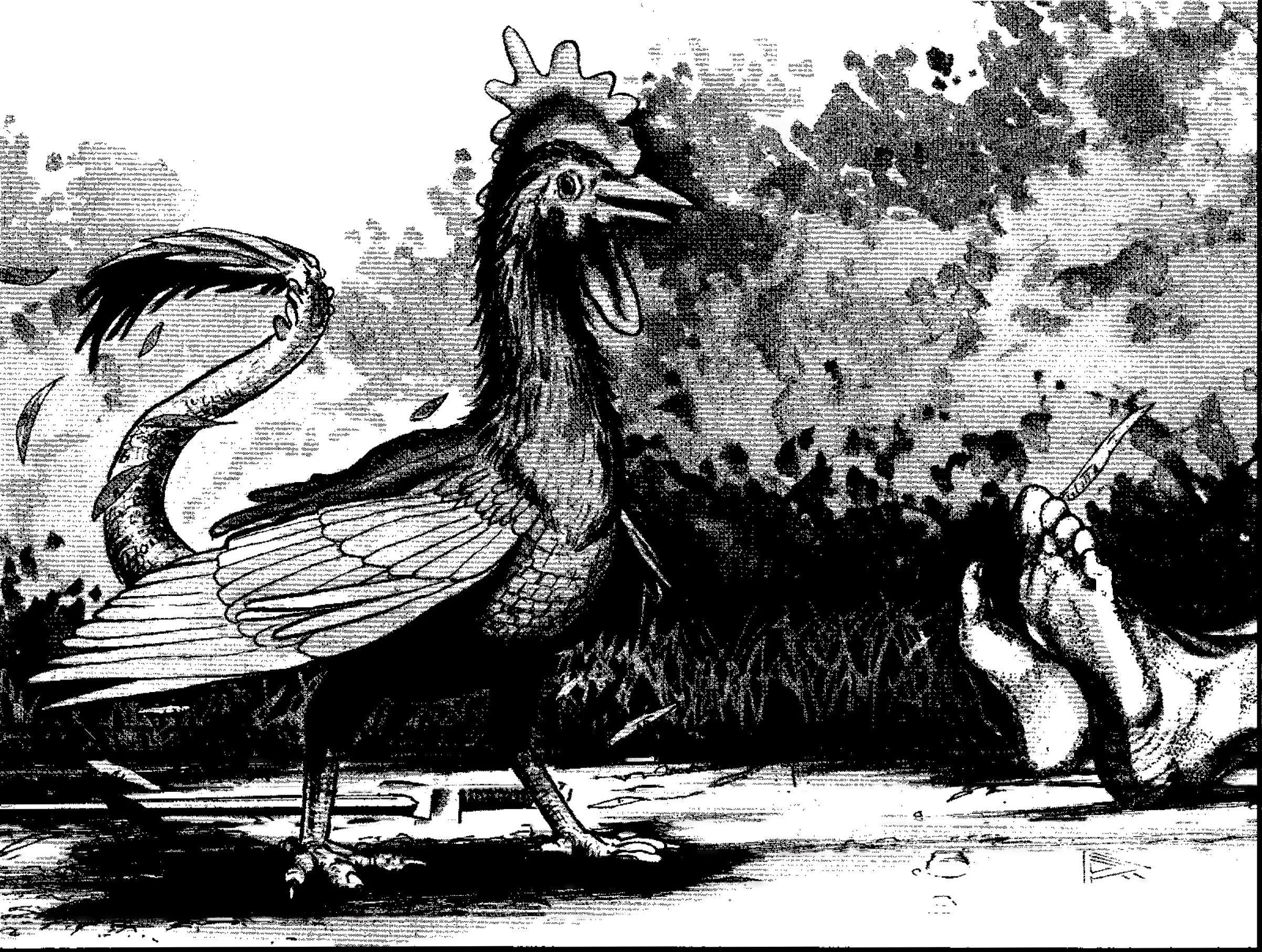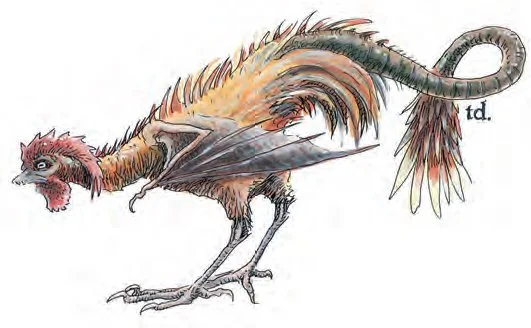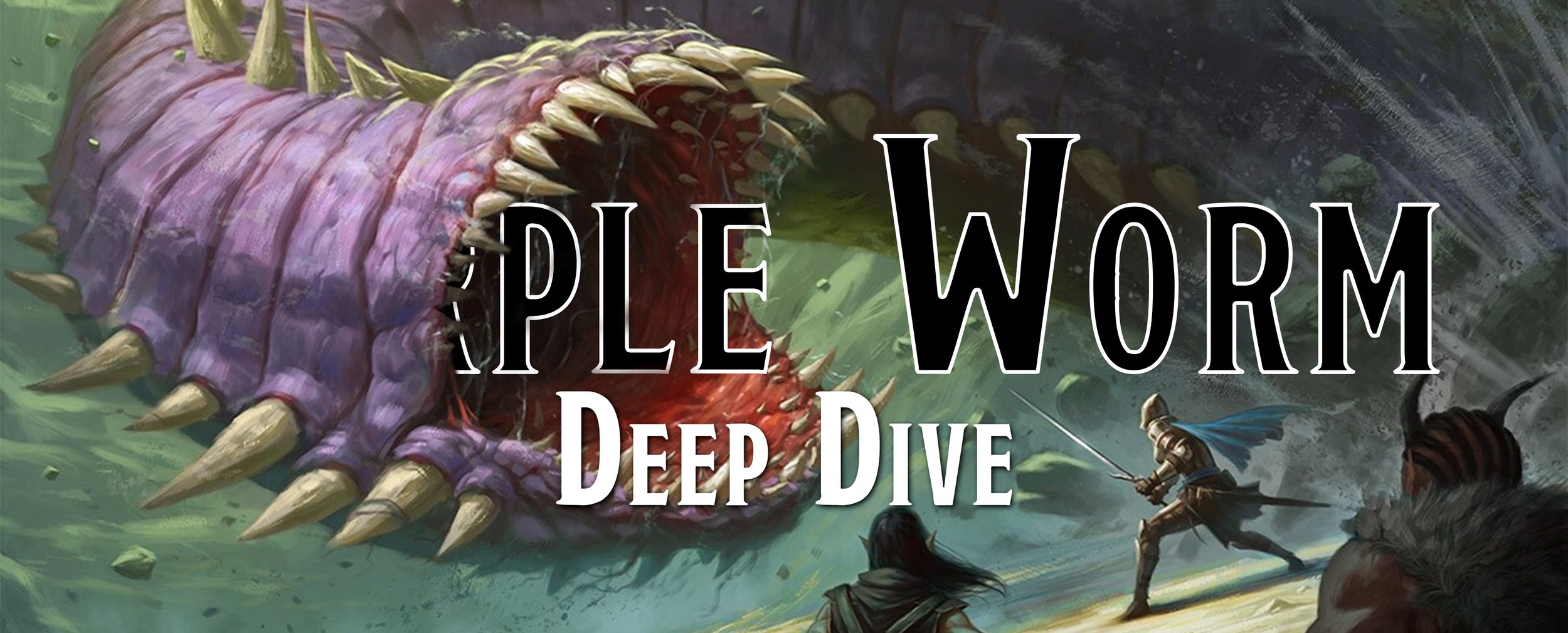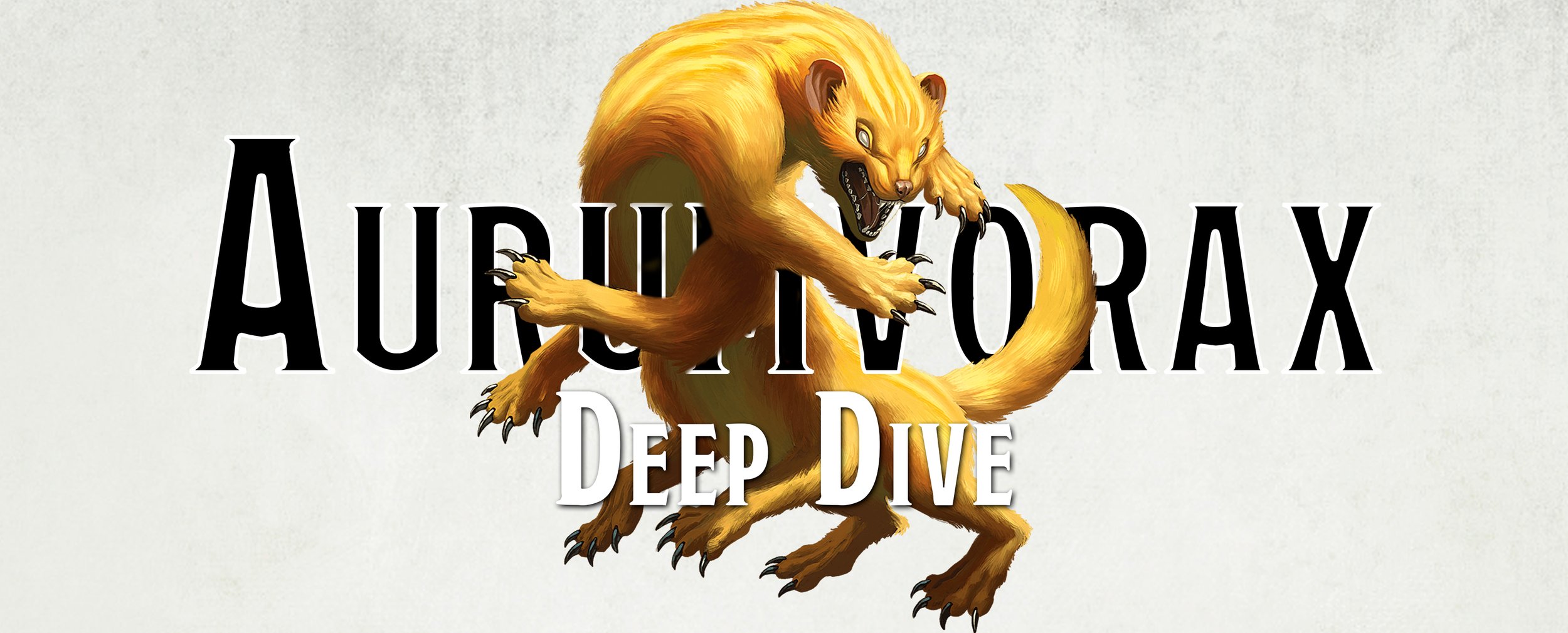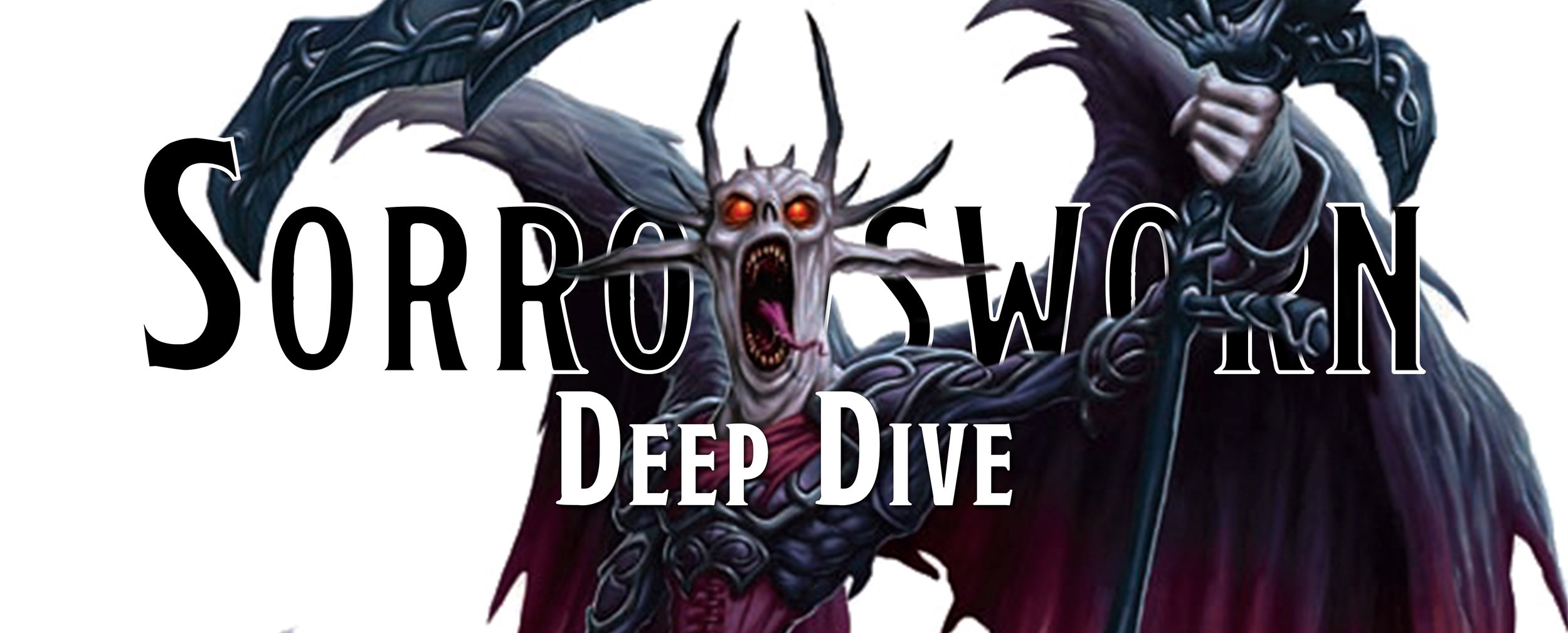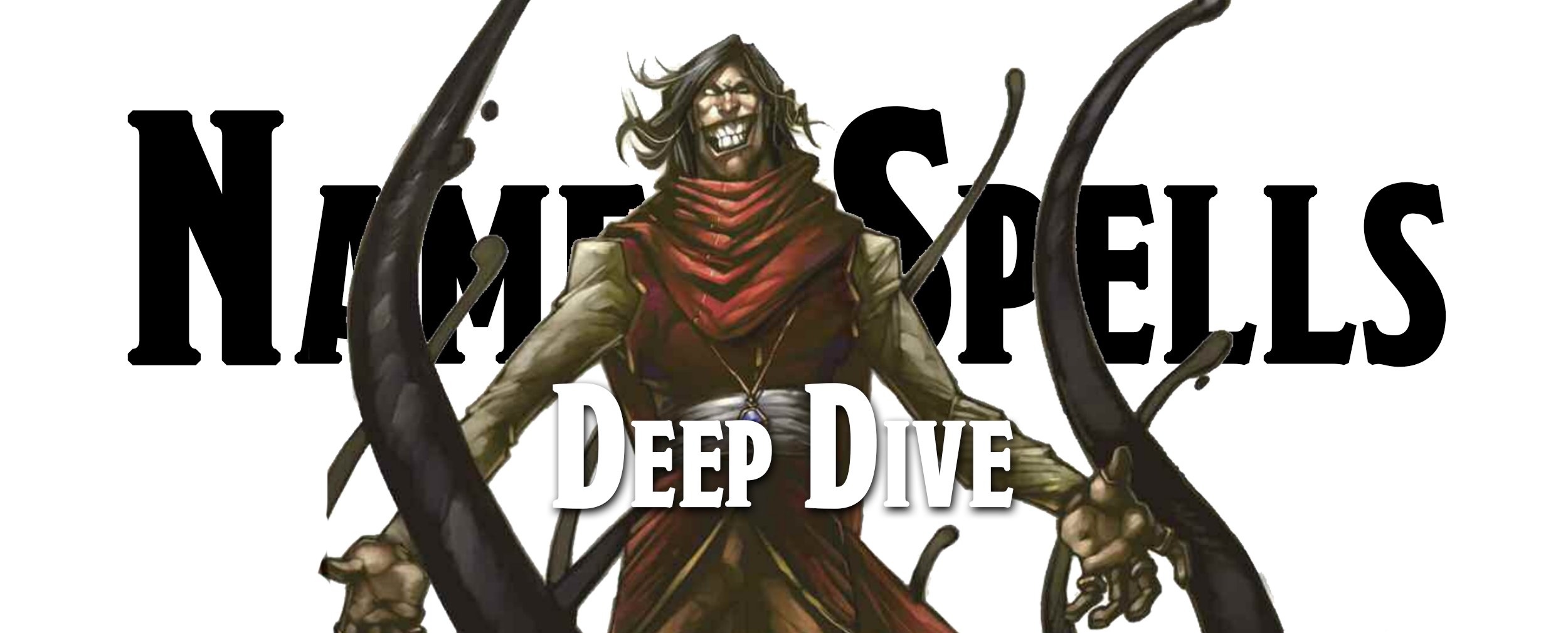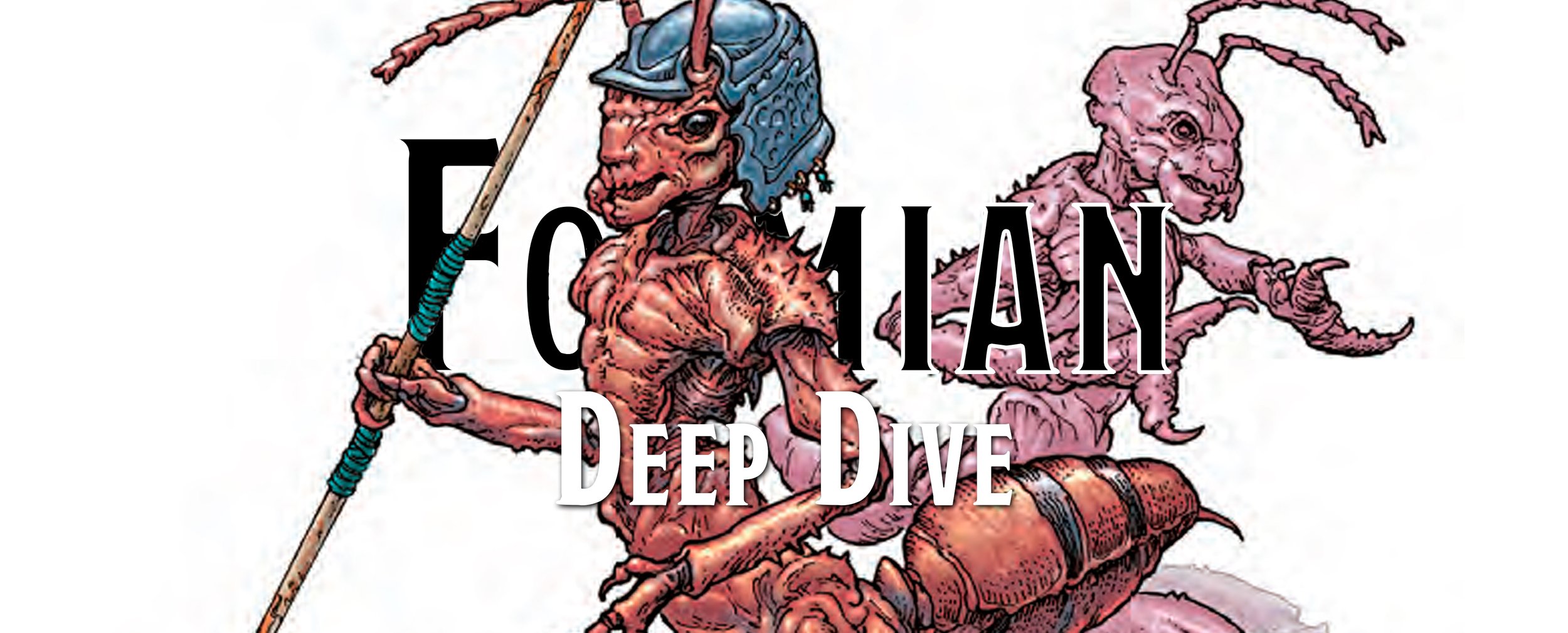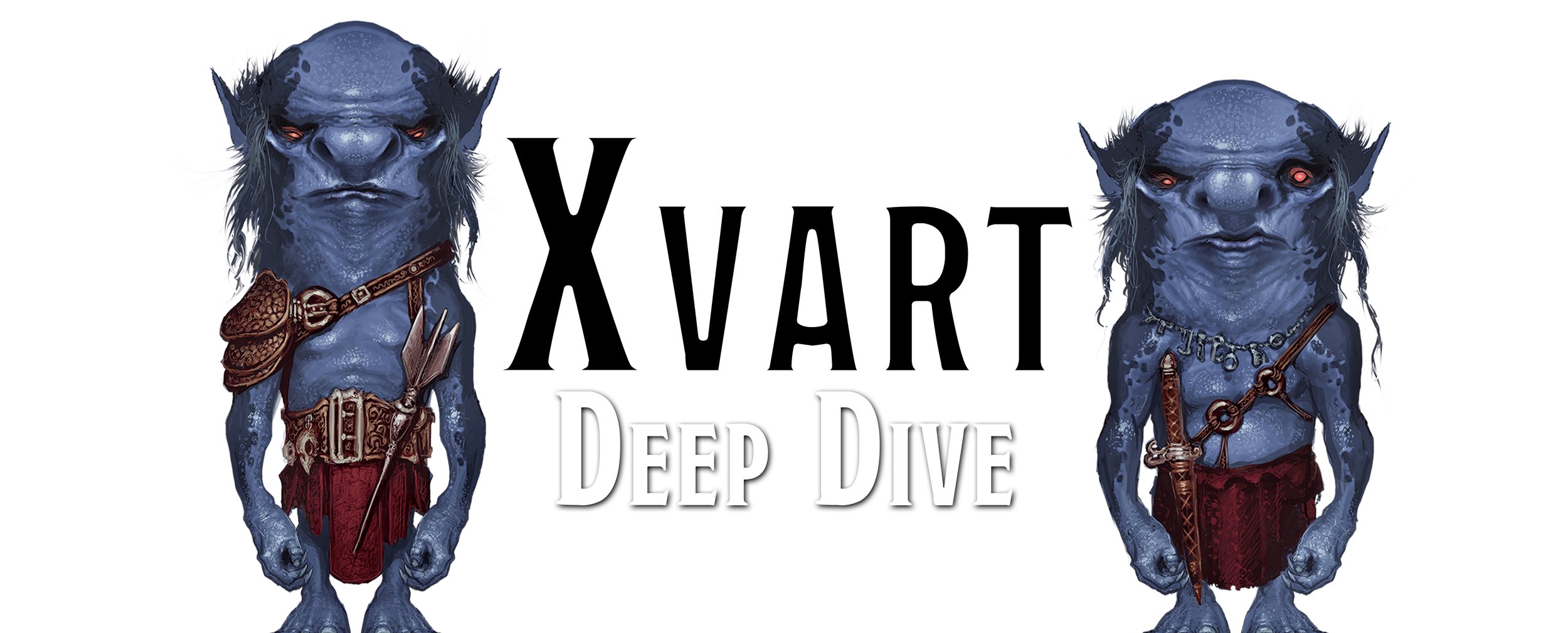Deep Dive - The Cockatrice
The mythology of the Cockatrice can be traced back to the Greeks and Romans, although they referred to this pseudo-bird creature as a basilisk, which is an entirely different creature in Dungeons & Dragons. Roman author Pliny the Elder writes about the basilisk in his book, the Natural History of the first century CE. He refers to it as the “king of serpents,” but the creature did not only turn its victims into stone. The basilisk could also breathe toxic gas into the air, killing all creatures and plant life nearby.
The terms basilisk and Cockatrice have been used interchangeably throughout history, which can lead to some confusion. The term Cockatrice was first found in King James Bible (1611) and is found in Isaiah chapter 11, though other versions replace the Cockatrice with a cobra. Isaiah, chapter 59, the Cockatrice is a creature whose eggs are hatched in the hands of those who have turned away from god. It’s not meant as a positive for those individuals, although we think it would be cool to have a baby snake-bird. There are a few other references, but we think you get the point; the Cockatrice symbolizes evil.
In the Middle Ages, the Cockatrice is described as having a rooster’s head that sat upon a reptile body with wings. Some called it a tiny dragon, and we assume dragons everywhere find this incredibly insulting. The Cockatrice was said to have the attributes of Pliny’s basilisk, including the power to turn creatures to stone with a mere glance. Its mortal enemy was the weasel, who was said to be immune to its stone-inducing stare. The only other thing that could put the fear of the gods in a Cockatrice was a rooster’s crow. It must have made mornings hard if their lair happened to be next to a farm, where they were born.
The Cockatrice has been the subject of discussion for a long time and has appeared throughout popular culture. We can only imagine it has survived for so long because of how visually confusing they are to behold.
OD&D - Cockatrice
No. Appearing: 1-8
Armor Class: 6
Move: 9/18
Hit Dice: 5
% in Lair: 35%
No. of Attacks: 1
Damage/Attack: 1-6 and turn to stone
Treasure: Type D
The Cockatrice makes its first appearance in Monsters & Treasure, Volume II of the White Box set (1974), where it doesn’t get much in the way of a description. It is just described as a more mobile, but less powerful basilisk. After that, it gets three measly sentences.
First, the Cockatrice can turn you to stone if it touches you. Great for the creature, extremely bad for you. On the bright side, you're not dead. Being turned to stone isn't the most pleasant thing in the world, but there are so many creatures that can instantly kill you in this edition, it's not so bad. Second, the Cockatrice can fly. Divebombing lizard chickens is the stuff of nightmares. Finally, they aren't smart. Nothing like a little brutal honesty. We’re sure if the Cockatrice could read, it’d be very upset.
Luckily, you do at least get a saving throw against turning to stone. If you are touched by the bird-snake-thing, you get to roll a d20. Depending on what level you are, you either have a great chance at not being petrified or a really poor one. Luckily, even a cleric and fighter at levels 1 to 3 only have to roll a 14 or higher to not be petrified. The bad news is that even at level 16 or higher, they still have a 20% chance of being petrified if they are touched by a Cockatrice, having to roll a 5 or higher on the die. At least there is a 6th-level spell, stone to flesh that you can reverse and revive someone who has been stoned… hopefully, it wasn’t your cleric that failed their save though.
Basic D&D - Cockatrice
Armor Class: 6
Hit Dice: 5**
Move: 90’ (30’), Flying 180’ (60’)
Attacks: 1 beak
Damage: 1-6 + petrification
No. Appearing: 1-4 (2-8)
Save as: Fighter: 5
Morale: 7
Treasure Type: D
Alignment: Neutral
XP Value: 425
First appearing in the Holmes - Basic Set (1977), we get three sentences on the strange little creature. It's described as a tiny monster with the head, wings, and legs of a cock and a serpent's tail. We'll pass on the obvious jokes, but feel free to share yours below.
The Cockatrice can fly, no shock there, and it turns people to stone with its touch. You'd think there'd be more excitement around this odd creature that can turn anything into stone just by touching them. Alas, there is not. What's more disappointing is the closing sentence reminds us that the Cockatrice is not the brightest tool in the shed. The insults just keep on coming.
The Cockatrice appears again in the Moldavay Expert Set (1980) and the Mentzer Expert Set (1983). While Mentzer at least throws an exclamation mark after the passage on how its touch turns you to stone, there isn’t really anything there. Luckily, this isn’t the last mention of the Cockatrice as we get a deeper look at the bird’s relationship to the Plane of Earth in Mentzer Companion Set (1984).
Moldvay Expert Set, 1980 TSR Inc.
Apparently, there are two types of Cockatrices, the kind we are familiar with are the natives of the Prime Material plane. On the other hand, there are the Cockatrices from the Plane of Earth who appear as one-foot-long bird-like creatures but are made of soft earth. While they still can petrify creatures with their touch, it only works on creatures not already made of earth, so we guess earth elementals are safe.
AD&D (1e) - Cockatrice
Frequency: Uncommon
No. Appearing: 1-6
Armor Class: 6
Move: 6”/18”
Hit Dice: 5
% in Lair: 30%
Treasure Type: D
No. of Attacks: 1
Damage/Attack: 1-3
Special Attacks: Touch turns to stone
Special Defenses: Nil
Magic Resistance: Standard
Intelligence: Animal
Alignment: Neutral
Size: S
Psionic Ability: Nil
Monster Manual, 1977 TSR Inc.
The Cockatrice is found in the Monster Manual (1977) and gets the same treatment as the previous editions, but now there are four whole sentences about the creature. Soon we are going to have enough sentences to create a second paragraph!
We do find out that the Cockatrice likes to reside in warm to hot regions and can even be found below ground! We do have to wonder if a Cockatrice sleeping underground dreams of soaring through the skies, or if it quite likes all the stone around it. In addition, we do learn that a Cockatrice is a bit more dangerous than we might’ve first guessed. Not only does its touch cause you to turn to stone, but if it touches a creature that is currently on the Ethereal Plane, like a ghost trying to ruin your day, it can turn that creature to stone all the while staying in its nice and comfortable home on the Material Plane.
There is even a more detailed description of the Cockatrice. Its feathers are a golden brown, but its wings are gray. Its beak is yellow, but the serpent's tail is yellow-green. The remaining features of the Cockatrice, including its comb, eyes, and tongue, are red. We're curious if this made our bizarre-looking bird's appearance better or worse.
If you were ever getting tired of a Cockatrice and just wished it had a bit more pizzazz or maybe could cast a fireball spell, you are in luck. In Monster Manual II (1983), we stumble upon the Pyrolisk, which is like a Cockatrice but spicy. While a Pyrolisk looks like a Cockatrice, except for its single red feather in its tail feathers, it is not a Cockatrice. Whereas a Cockatrice likes to turn you into stone, a Pyrolisk likes to set you on fire. Whereas a Cockatrice can only turn you into stone if it strikes you, a Pyrolisk only has to look at you. You then combust.
Luckily, you do get to make a single saving throw against petrification, on a success you don’t burst into flames. On a failed save, you spontaneously combust from the inside and your entire body turns into a you-candle. As you might guess, this kills you instantly. There is a defense to this gaze attack though, all you have to be is resistant or immune to fire damage. Or, we suppose, another option is to simply never look at a chicken again, especially if you find it in a hot jungle.
The Cockatrice is finally shown true love in the Ecology of the Cockatrice written by Ed Greenwood in Dragon #95 (March 1985). The master of creature ecologies, the wizard Elminster, tells the story of an arrogant king and his demise at the hands of a single Cockatrice feather. The king loved racing ships and defeated all those he challenged. Envious of their flying boat, the king challenged the wizards of Thay, confident he would be victorious. Taking an early lead, the ships were beset by a massive storm. The king whipped his crew harder as they struggled against the waves. Unbeknownst to the king, the wizards had magically placed a Cockatrice feather at the end of the whip. The crew was turned to stone, and the king, his petrified crew, and his ship were destroyed on the nearby rocks, and the wizards of Thay were victorious.
Dragon #95, March 1985 TSR Inc.
Elminster provides his audience with more information on the Cockatrice we have seen. Males outnumber females, and they fight amongst each other to find a mate. Once two Cocktrices fall in love, they will establish a lair. The decorating style of the Cockatrice is gold, silver, and shiny gems. Not only does this make their home sweet home bright and pretty, but the more there is, the higher their status in the flock.
Females will lay one to two eggs at a time, and fiercely protect them against outsiders. Males spend their time foraging for food. Once the eggs hatch, a baby Cockatrice appears identical to its parents except in size. Young Cockatrices grow to mature size in four to six months and attain their petrification ability. Like many of the creatures we've seen, mom and dad kick their offspring out and remain empty nesters, until more eggs are laid.
A Cockatrice must touch the person's flesh for the petrification to take effect. You'll be safe if you're covered head to toe in clothes, armor, or a fuzzy bathrobe. Otherwise, the Cockatrice will automatically attempt to peck you on any exposed flesh. The no-targeting rule apparently doesn't apply to a Cockatrice. Lucky chicken lizard.
We get some clarification on how the Cockatrice's abilities function on the Astral and Ethereal planes. The lizard chicken has a partial, intangible existence on both planes, and it is identical to the corporeal form on the Material plane. This aura can petrify its enemies on the Astral and Ethereal planes, while a Cockatrice's physical condition is what does so on the Material plane. In summary, if you think you're safe when you try to escape to either of these planes, you're not.
A Cockatrice can turn off its petrification ability as needed. We guarantee it won't do so when locked in combat with you. An obvious sign that they won't is when they charge at you while squawking and screeching at the top of their lungs. It will use its ability to turn off petrification while it is hunting though, largely so that it can eat. Stone rodents are problematic in the digestive system.
There are some people out there who think that a Cockatrice would make a good pet and pay top dollar for a Cockatrice egg. We're not sure about you, but any pet that can turn us to stone doesn't sound like a good idea, but people are strange. If you're into cutting-edge fashion, you can make certain wearable items like hats and cloaks from a Cockatrice's feather that retains the ability to turn all those who are touched by it into stone. You'll need a cauldron, oil of etherealness, aqua regia, and half an ounce of human tears. Once you've got your mixture in the cauldron, bring it to a boil while stirring with a glass or crystal rod. While it’s all stirring, add in six thousand gold worth of powdered agate and six whole cerebral parasites. If you can't find any parasites at your local supermarket, don't fret. You can substitute them for seven drops of slaad, githyanki, or nightmare blood. Once your concoction is complete, drop your Cockatrice feathers in there and wait for an hour, and voila. You have the perfect feathers to stick in your cap when you have to go to a gala and are hired to assassinate the king.
2e - Cockatrice
Climate/Terrain: Temperate to tropical, any terrain
Frequency: Uncommon
Organization: Flock
Activity Cycle: Any
Diet: Omnivorous
Intelligence: Animal (1)
Treasure: D
Alignment: Neutral
No. Appearing: 1-6
Armor Class: 6
Movement: 6, Fl 18 (C)
Hit Dice: 5
THAC0: 15
No. of Attacks: 1
Damage/Attack: 1-3
Special Attacks: Petrification
Special Defenses: Nil
Magic Resistance: Nil
Size: S (3’ tall)
Morale: Steady (11-12)
XP Value: 650
Monstrous Manual, 1993 TSR Inc.
Found in the Monstrous Manual (1993), there are two creatures we can explore; the Cockatrice and the Pyrolisk. We do have to wonder, based on its name, why the Pyrolisk isn’t a variant of the basilisk, but we are excited to keep a friend for the Cockatrice. We must give props, before we begin, since the Cockatrice gets a full page of information, though, not much of it’s new, just a retelling of the Ecology of article from before.
The Cockatrice is now a combination lizard, rooster - still referred to as a cock - and bat. It is roughly the size of your average turkey. Its head and body remain that of a rooster covered in golden brown feathers. The lizard's tail now has feathers at its end. The big change is instead of rooster wings, the Cockatrice's wings are those of the bat. It makes sense since roosters can only fly short distances, but did they have to be those of a bat? There are plenty of birds that the wings could have been modeled after. The eyes, wattle, and comb are still bright red.
The Cockatrice is still mean as ever. It will attack anything it deems as a threat, and we all know most adventurers swing their swords first and ask questions second. When the Cockatrice charges forward, by instinct alone, it is intent on pecking any exposed flesh it sees. A common tactic for this lizard-bird is to fly at your face since few people bother to wear helmets in Fantasyland, especially wizards. The thought of two chicken feet and their razor-sharp talons attached to a rooster-lizard-bat monster aimed directly at your eyes is terrifying.
If you think a flying bird striking you in the face is all you have to worry about, guess again as it will use its horrific claws to grapple onto you. This makes it all the easier to poke you with its beak into your soft spots. Those soft spots now include any body part covered in cloth or leather armor but not plate as it can't use its petrification power through metal armor. Great for the Cockatrice, not so much for you. Luckily for you, their abilities only extend into the Ethereal Plane, so if a flock is chasing you, you can always plane shift into the vast sea of the Astral Plane or trick your barbarian into attacking them while you run away.
The Pyrolisk is a distant cousin to the Cockatrice. As we talked about before, they are nearly identical to the Cockatrice, the only variations being that the wings have a reddish hue and the tail has a single red feather at its tip, which we can imagine is a bit hard to spot when you stumble across this angry bird.
While your normal reaction to seeing a bird-thing the size of a turkey is to torch it with fire and cook dinner, they are immune to fire. Also, they have a bit of intelligence in them, though it has only made them mean. Apparently when you have limited intelligence, and you have an existential crisis about the meaninglessness of life, the universe, and everything, you end up a bit cruel. A Pyrolisk lives to create chaos, doing so on purpose instead of instinct.
On the plus side, its touch won't turn you to stone, but don't get too excited. If you meet the gaze of a Pryolisk and fail your saving throw, you instantaneously burst into flames and suffer a fiery and agonizing death. If you ask us, being turned into stone is much better than being reduced to a pile of ash. Their gaze can also cause any fire source to become a fireworks display, complete with pretty colors and scaring dogs everywhere.
3e/3.5e - Cockatrice
Small Magical Beast
Hit Dice: 5d10 (27)
Initiative: +3
Speed: 20 ft. (4 squares), fly 60 ft. (poor)
Armor Class: 14 (+1 size, +3 Dex), touch 14, flat footed 11
Base Attack: +5/-1
Attacks: Bite +9 melee (1d4-2 plus petrification)
Full Attack: Bite +9 melee (1d4-2 plus petrification)
Space/Reach: 5 ft./5 ft.
Special Attacks: Petrification
Special Qualities: Darkvision 60 ft., low light vision
Saves: Fort +4, Ref +7, Will +2
Abilities: Str 6, Dex 17, Con 11, Int 2, Wis 13, Cha 9
Skills: Listen +7, Spot +7
Feats: Alertness, Dodge, Weapon Finesse
Climate/Terrain: Temperate plains
Organization: Solitary, pair, flight (3-5), flock (6-13)
Challenge Rating: 3
Treasure: None
Alignment: Always neutral
Advancement: 6-8 HD (Small); 9-15 HD (Medium)
Level Adjustment: -
Monster Manual, 2003 WotC
The Cockatrice is found in the Monster Manual (2000/2003), and while we wish we could tell you there was new and exciting information on the Cockatrice, we must disappoint you. The only bit of information we can squeeze out of this is that Cockatrice feathers are a prized writing quill for scribes. Whether that excites you or not is probably based on how much you spend on pens and pencils each year, which is probably close to zero.
Luckily, not all hope is lost in this edition as we learn, in the Manual of the Planes (2001), that you can find a water elemental Cockatrice on the Plane of Water. Though this just involves applying the water elemental template to the base creature, so it’s not like they turn you into a column of salt or cause you to spontaneously explode into water. Instead, they get a blue-green hue and they have a more nurturing disposition unless you get them angry. In addition, its very touch can douse torches, campfires, lanterns, and open flame with buckets of water. So, maybe the Water Elemental Cockatrice can cool down a Pyrolisk by pecking it to death and giving it a water bath.
Dungeonscape (2007), on the other hand, has alternative feats that can be applied to the Cockatrice. Unfortunately, this includes only two: Flyby Attack and Improved Initiative. Flyby instead of Dodge is a significant improvement since the creature can then fly down, try to turn you to stone, then zip away in case it is unsuccessful. Improved Initiative instead of Alertness gives the Cockatrice a chance to kill you before the wizard can say fireball.
Dragon #329 (March 2005), author Kyla Ward discusses in detail the differences and similarities between the basilisk and the Cockatrice in their article The Petite Tarrasque and Other Monsters, A Bestiary of the Real World. As we discussed at the start, the term basilisk and Cockatrice have been used interchangeably throughout history. The author references Pliny's Natural History and the King James Bible as we did, along with a new source we did not. In George Caspard Kirchmayer's On the Basilisk (1691), we have the last known eyewitness report of a basilisk or a Cockatrice. It occurred in Warsaw in the mid-16th century when a nurse and two children died in a cellar. Thinking there was a basilisk in the basement, the authorities convinced a prisoner sentenced to death to root out the creature.
Successful in his assignment, he surprised everyone when he emerged with a creature that had the body of a spotted lizard with a rooster's head and feet. It's more than a little scary to think that there might have been flocks of Cockatrices running around in the real world, but we have a hard time believing this to be true.
4e - Cockatrice
Level 5 Skirmisher
Small Natural Beast / XP 200
Initiative +8
Senses Perception + 2; low-light vision
HP 63; Bloodied 31
AC 19; Fortitude 17, Reflex 19, Will 15
Immune petrification
Speed 4, fly 6 (clumsy)
Bite (standard; at-will) +10 vs. AC; 1d6 + 3 damage, and the cockatrice makes a secondary attack against the same target. Secondary Attack: +8 vs. Fortitude; the target is slowed (save ends). First Failed Saving Throw: The target is immobilized instead of slowed (save ends). Second Failed Saving Throw: The target is petrified.
Buffeting Wings (immediate interrupt, when an enemy moves adjacent to the cockatrice; recharge). The cockatrice uses its bite against the triggering enemy and then shifts 3 squares.
Alignment Unaligned / Languages -
Skills Stealth +11
Str 9 (+1) Dex 18 (+6) Wis 11 (+2) Con 15 (+4) Int 2 (-2) Cha 4 (-1)
Monster Manual 2, 2009 WotC
We must wait until Monster Manual 2 (2009) before the lizard-bat-bird is allowed to unleash its fury against a wandering band of murderous adventurers. For an edition that is infamous for changing iconic creatures in odd and confusing ways, it does practically nothing to change the Cockatrice. What's even more depressing is there is only the base Cockatrice stat block, whereas so many other monsters have a four-tier set of creatures under one heading.
We take solace in a minor tweak made to the Cockatrice. The most significant change involves you no longer being turned into a stone statue immediately after you get pecked in the face. If you fail your first saving throw, you're only immobilized! Isn't that wonderful? Of course, if you fail the second saving throw, petrification is inevitable, but at least you have two chances to pray to the dice gods and save your character.
The Cockatrice's buffeting wings benefit the creature when it charges you by flapping its wings. Where before, it may have only looked terrifying, now flapping its wings when you get too close allows it to use a reaction to attack you and then run away after the assault on your not-yet-stone body.
We can also announce a great way to save your companions if they were to be petrified by a Cockatrice. If you pluck feathers from a fresh Cockatrice corpse, or a still living one we suppose, you can then mix it with some mud to create a potent antidote. After that, you just need to spread this mud-feather mixture on your petrified friend and succeed on a Heal check. If you succeed, thirty minutes later, your ally is no longer stoned, and we don’t mean it that way. Of course, this only works if the victim was petrified in the last 24 hours, though it doesn’t specifically state it only works on those petrified by a Cockatrice - so medusae and basilisk victims may want to take note.
The Cockatrice appears in an adventure appearing in Dungeon #171 (October 2009). In the adventure, Treed! written by Tim Eagon, a Cockatrice has been captured by a kenku, the main villains of the adventure. It's not particularly happy with this situation, as it is kept on a leash. This poses a challenge for the kenku when they attempt to sneak up on the adventurers since it squawks louder than usual. The Cockatrice may not be very intelligent, but it's smart enough to let its captors know when it's pissed off.
5e - Cockatrice
Small Monstrosity, unaligned
Armor Class 11
Hit Points 27 (6d6 + 6)
Speed 20 ft., fly 40 ft
Str 6 (-2) Dex 12 (+1) Con 12 (+1) Int 2 (-4) Wis 13 (+1) Cha 5 (-3)
Skills Stealth +4
Senses darkvision 60 ft., passive Perception 11
Languages -
Challenge 1/2 (100 XP)
Bite. Melee Weapon Attack: +3 to hit, reach 5 ft., one creature. Hit: 3 (1d4 + 1) piercing damage, and the target must succeed on a DC 11 Constitution saving throw against being magically petrified. On a failed save, the creature begins to turn to stone and is restrained. It must repeat the saving throw at the end of its next turn. On a success, the effect ends. On a failure, the creature is petrified for 24 hours.
Monster Manual, 2014 WotC
Our bizarre little creature appears in the Monster Manual (2014). It's nice to see this iconic character appears right off the bat, it belongs amongst the classic creatures. Unfortunately, the lack of information rivals that of the previous editions. Are we disappointed? Yes, but that isn’t the main reason we are disappointed in this version.
Everyone knows by now a Cockatrice makes the owlbear look like a creature which can be explained by natural selection. It still looks like a hideous lizard, bird, and bat hybrid. We would've figured there would be a line about being created by an evil and/or mad wizard, but there is not. We assume the writers don't want to mess with a historical creature of this magnitude, and we don't blame them.
Once again, it's not the beak attack that will kill you. Then again, the Cockatrice's petrification ability won't exactly kill you, but being turned to stone is the next worst thing. Why eating habits still need to be discussed is beyond us, but what do we know? They are omnivores, dining on a mixture of berries, flowers for their veggies, and small animals such as insects, mice, and frogs for protein.
Speaking of its petrification ability, its effects are pretty bad... for it, not you. Not only does it require two failed saves, at a very low DC, for a creature to be turned to stone, which we are good with, the petrification only lasts for 24 hours. That means if your buddy gets stoned, just wait 24 hours and they’ll be fine again, you know like usual when the ranger gets into their herbs. We aren’t sure why that ability needed to be nerfed so hard when you could’ve just kept an easy remedy to fix the petrification and give your group of adventurers a reason to push through an adventuring day instead of just long resting after every combat like they usually do.
Pathfinder 2e - Bestiary, 2019 Paizo Publishing
The Cockatrice may have started as the third cousin, twice removed, of the more well-known basilisk, but over time it has become feared by adventurers in its own right, except more recently. Even if the creature couldn't turn you to stone, its appearance alone would send most commoners running away while screaming in terror about horrific monsters. We can't blame them because after getting over our confusion when seeing a rooster-lizard-bat turkey-sized monster, we'd sprint in the opposite direction too.

